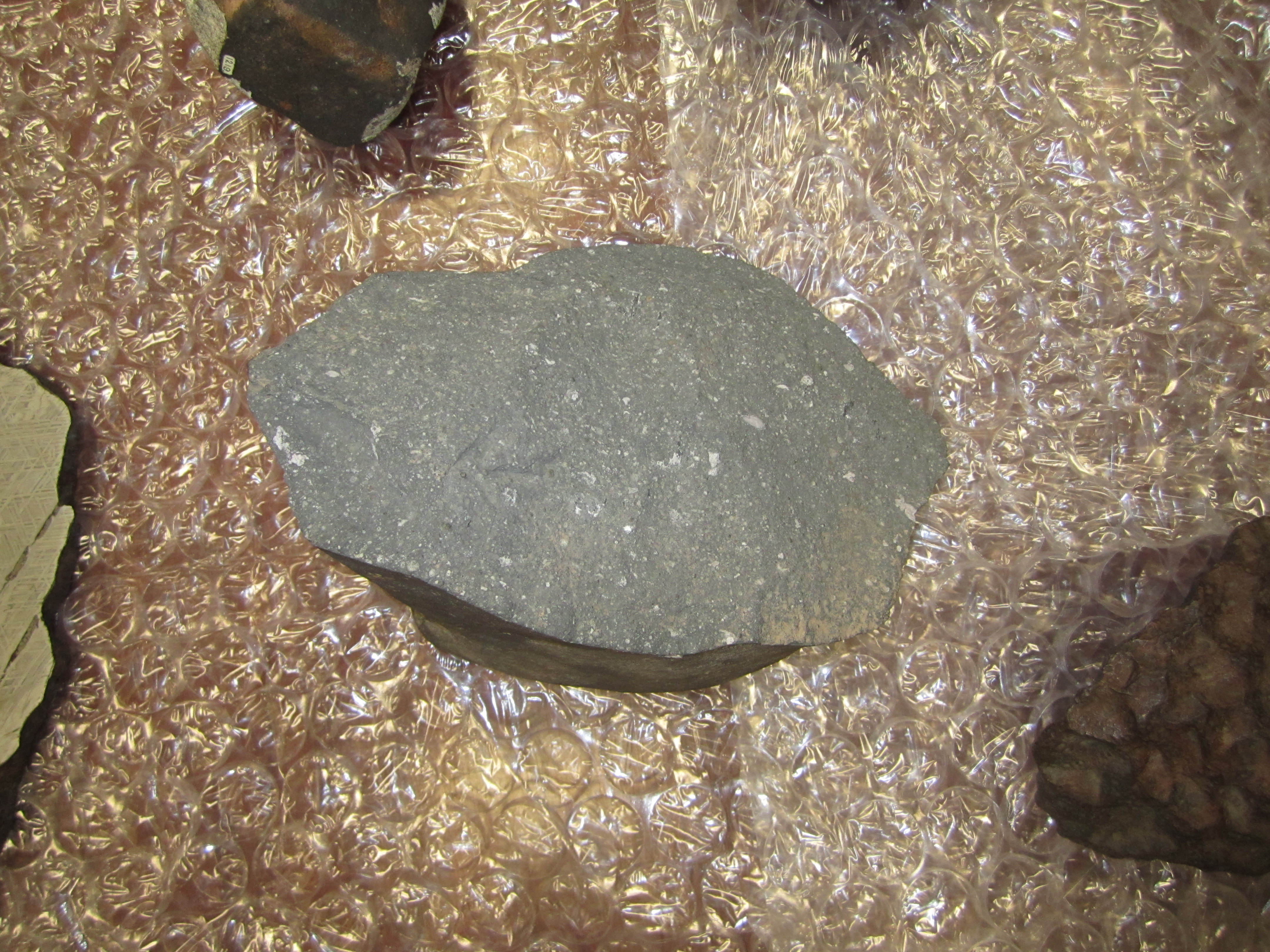Calcium–aluminium-rich inclusion on:
[Wikipedia]
[Google]
[Amazon]
 A calcium–aluminium-rich inclusion or Ca–Al-rich inclusion (CAI) is a submillimeter- to centimeter-sized light-colored
A calcium–aluminium-rich inclusion or Ca–Al-rich inclusion (CAI) is a submillimeter- to centimeter-sized light-colored
"Dating the Earliest Solids in our Solar System"
''Planetary Science Research Discoveries''. http://www.psrd.hawaii.edu/Sept02/isotopicAges.html * Shukolyukov A., Lugmair G.W. (2002) "Chronology of Asteroid Accretion and Differentiation", pp. 687–695, in ''Asteroids III'', Bottke W.F., Cellino A., Paolicchi P., Binzel R.P., eds., University of Arizona Press (2002), {{DEFAULTSORT:Calcium-aluminium-rich inclusion Meteorite minerals Solar System dynamic theories
calcium
Calcium is a chemical element with the symbol Ca and atomic number 20. As an alkaline earth metal, calcium is a reactive metal that forms a dark oxide-nitride layer when exposed to air. Its physical and chemical properties are most similar ...
- and aluminium
Aluminium (aluminum in American and Canadian English) is a chemical element with the symbol Al and atomic number 13. Aluminium has a density lower than those of other common metals, at approximately one third that of steel. It ha ...
-rich inclusion found in carbonaceous chondrite meteorite
A meteorite is a solid piece of debris from an object, such as a comet, asteroid, or meteoroid, that originates in outer space and survives its passage through the atmosphere to reach the surface of a planet or moon. When the original object ...
s. The four CAIs that have been dated using the Pb-Pb chronometer yield a weighted mean age of 4567.30 ± 0.16 Myr. As CAIs are the oldest dated solids, this age is commonly used to define the age of the Solar System.
Description
CAIs consist ofmineral
In geology and mineralogy, a mineral or mineral species is, broadly speaking, a solid chemical compound with a fairly well-defined chemical composition and a specific crystal structure that occurs naturally in pure form.John P. Rafferty, ed. (2 ...
s that are among the first solid
Solid is one of the four fundamental states of matter (the others being liquid, gas, and plasma). The molecules in a solid are closely packed together and contain the least amount of kinetic energy. A solid is characterized by structur ...
s condensed from the cooling protoplanetary disk. They are thought to have formed as fine-grained condensates from a high temperature (>1300 K) gas that existed in the protoplanetary disk at early stages of Solar System formations. Some of them were probably remelted later resulting in distinct coarser textures. The most common and characteristic minerals in CAIs include anorthite
Anorthite is the calcium endmember of the plagioclase feldspar mineral series. The chemical formula of pure anorthite is Ca Al2 Si2O8. Anorthite is found in mafic igneous rocks. Anorthite is rare on the Earth but abundant on the Moon.
Minera ...
, melilite, perovskite
Perovskite (pronunciation: ) is a calcium titanium oxide mineral composed of calcium titanate (chemical formula ). Its name is also applied to the class of compounds which have the same type of crystal structure as (XIIA2+VIB4+X2−3), known a ...
, aluminous spinel
Spinel () is the magnesium/aluminium member of the larger spinel group of minerals. It has the formula in the cubic crystal system. Its name comes from the Latin word , which means ''spine'' in reference to its pointed crystals.
Properties
S ...
, hibonite
Hibonite is a mineral with the chemical formula , occurring in various colours, with a hardness of 7.5–8.0 and a hexagonal crystal structure. It is rare, but is found in high-grade metamorphic rocks on Madagascar. Some presolar grains in primiti ...
, calcic pyroxene
The pyroxenes (commonly abbreviated to ''Px'') are a group of important rock-forming inosilicate minerals found in many igneous and metamorphic rocks. Pyroxenes have the general formula , where X represents calcium (Ca), sodium (Na), iron (Fe I ...
, and forsterite-rich olivine
The mineral olivine () is a magnesium iron silicate with the chemical formula . It is a type of nesosilicate or orthosilicate. The primary component of the Earth's upper mantle, it is a common mineral in Earth's subsurface, but weathers qui ...
.
Using the lead-lead isotope chronometer (‘Pb–Pb dating’), the absolute age of four CAIs have been calculated. They yield a weighted mean age of 4567.30 ± 0.16 Myr, which is often interpreted as representing the beginning of the formation of the planetary system (so-called ‘CAI time-zero). It is of note that all four Pb-Pb dated CAIs come from the same group of meteorite ( CV chondrites).
See also
*Glossary of meteoritics
This is a glossary of terms used in meteoritics, the science of meteorites.
#
* 2 Pallas – an asteroid from the asteroid belt and one of the likely parent bodies of the CR meteorites.
* 4 Vesta – second-largest asteroid in the asteroid b ...
References
Bibliography
* MacPherson, G. J. (2004) "Calcium-aluminum-rich inclusions in chondritic meteorites." In ''Treatise on Geochemistry, Volume I, Meteorites, Comets, and Planets'', A. M. Davis, edt., Elsevier, New York, pp. 201–246. * Krot, A. N. (September 2002"Dating the Earliest Solids in our Solar System"
''Planetary Science Research Discoveries''. http://www.psrd.hawaii.edu/Sept02/isotopicAges.html * Shukolyukov A., Lugmair G.W. (2002) "Chronology of Asteroid Accretion and Differentiation", pp. 687–695, in ''Asteroids III'', Bottke W.F., Cellino A., Paolicchi P., Binzel R.P., eds., University of Arizona Press (2002), {{DEFAULTSORT:Calcium-aluminium-rich inclusion Meteorite minerals Solar System dynamic theories